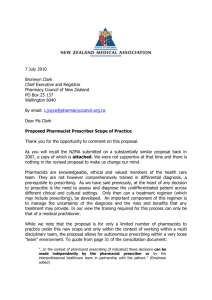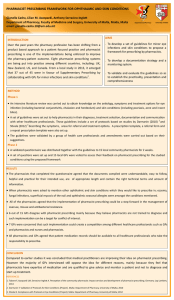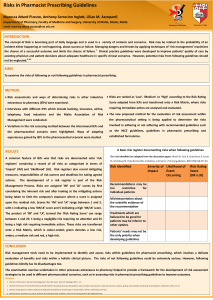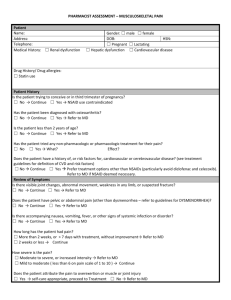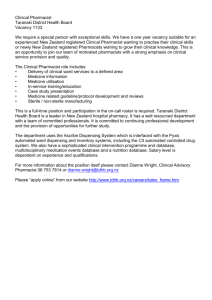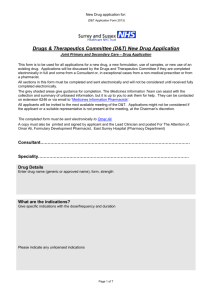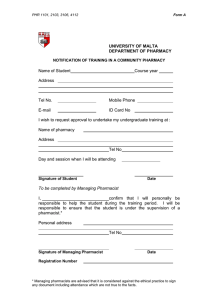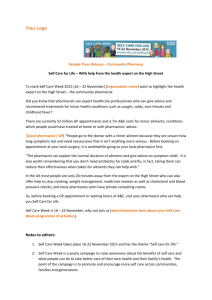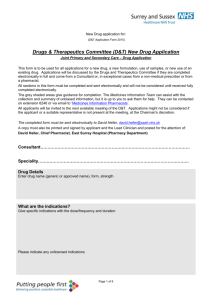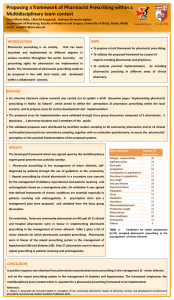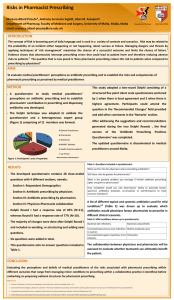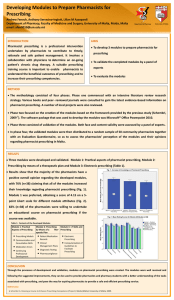DIFFERENCE IN ANTI-DEPRESSANT PRESCRIBING TRENDS BETWEEN GENERAL PRACTITIONERS AND PSYCHIATRIC SPECIALISTS
advertisement
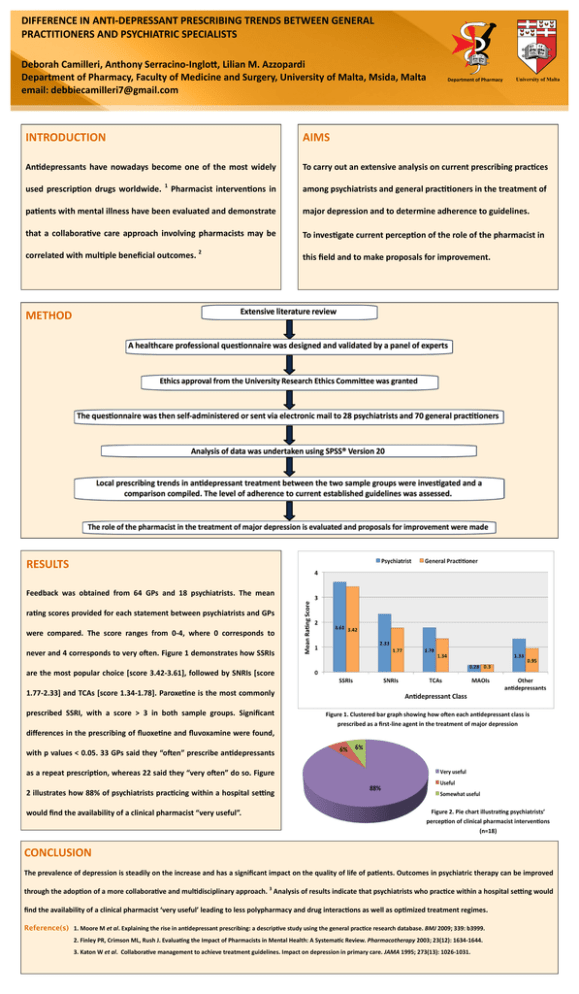
DIFFERENCE IN ANTI-DEPRESSANT PRESCRIBING TRENDS BETWEEN GENERAL PRACTITIONERS AND PSYCHIATRIC SPECIALISTS Deborah Camilleri, Anthony Serracino-Inglott, Lilian M. Azzopardi Department of Pharmacy, Faculty of Medicine and Surgery, University of Malta, Msida, Malta email: debbiecamilleri7@gmail.com DEPARTMENT OF PHARM ACY UNIVERSI TY OF MA LTA Department of Pharmacy University of Malta INTRODUCTION AIMS Antidepressants have nowadays become one of the most widely To carry out an extensive analysis on current prescribing practices used prescription drugs worldwide. 1 Pharmacist interventions in among psychiatrists and general practitioners in the treatment of patients with mental illness have been evaluated and demonstrate major depression and to determine adherence to guidelines. that a collaborative care approach involving pharmacists may be To investigate current perception of the role of the pharmacist in correlated with multiple beneficial outcomes. 2 this field and to make proposals for improvement. METHOD RESULTS Feedback was obtained from 64 GPs and 18 psychiatrists. The mean rating scores provided for each statement between psychiatrists and GPs were compared. The score ranges from 0-4, where 0 corresponds to never and 4 corresponds to very often. Figure 1 demonstrates how SSRIs are the most popular choice [score 3.42-3.61], followed by SNRIs [score 1.77-2.33] and TCAs [score 1.34-1.78]. Paroxetine is the most commonly prescribed SSRI, with a score > 3 in both sample groups. Significant Figure 1. Clustered bar graph showing how often each antidepressant class is prescribed as a first-line agent in the treatment of major depression differences in the prescribing of fluoxetine and fluvoxamine were found, with p values < 0.05. 33 GPs said they “often” prescribe antidepressants as a repeat prescription, whereas 22 said they “very often” do so. Figure 2 illustrates how 88% of psychiatrists practicing within a hospital setting would find the availability of a clinical pharmacist “very useful”. Figure 2. Pie chart illustrating psychiatrists’ perception of clinical pharmacist interventions (n=18) CONCLUSION The prevalence of depression is steadily on the increase and has a significant impact on the quality of life of patients. Outcomes in psychiatric therapy can be improved through the adoption of a more collaborative and multidisciplinary approach. 3 Analysis of results indicate that psychiatrists who practice within a hospital setting would find the availability of a clinical pharmacist ‘very useful’ leading to less polypharmacy and drug interactions as well as optimized treatment regimes. Reference(s) 1. Moore M et al. Explaining the rise in antidepressant prescribing: a descriptive study using the general practice research database. BMJ 2009; 339: b3999. 2. Finley PR, Crimson ML, Rush J. Evaluating the Impact of Pharmacists in Mental Health: A Systematic Review. Pharmacotherapy 2003; 23(12): 1634-1644. 3. Katon W et al. Collaborative management to achieve treatment guidelines. Impact on depression in primary care. JAMA 1995; 273(13): 1026-1031.

